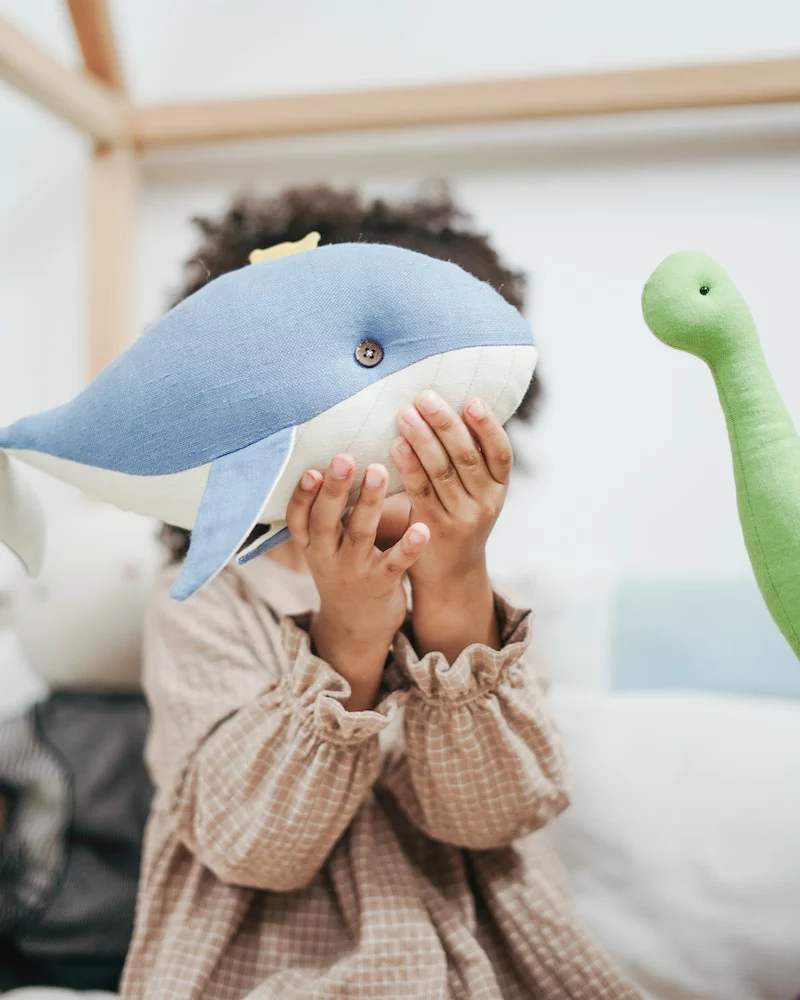I. Introduction

A. Importance of keeping plush toys clean and hygienic Regular cleaning of plush toys is crucial for maintaining cleanliness, preventing the buildup of allergens, and promoting good hygiene for both children and adults.
B. Overview of using a washing machine for washing plush toys Using a washing machine can be an efficient and effective way to clean plush toys, ensuring thorough cleanliness while minimizing effort.
II. Preparing Plush Toys for Machine Washing
A. Checking care labels and recommendations
- Reading and understanding care labels on plush toys Care labels provide important information about the appropriate washing instructions, including water temperature, washing cycles, and specific care precautions.
- Following manufacturer’s recommendations for machine washing Manufacturers often provide specific guidelines for washing their plush toys in a washing machine. These recommendations should be adhered to for optimal cleaning results and to avoid damaging the toys.
B. Preparing toys for machine washing
- Inspecting toys for loose parts, batteries, or delicate accessories that may be damaged in the washer Remove any detachable parts, such as batteries, electronics, or delicate accessories, to prevent damage during the washing process.
- Fastening any closures or zippers to prevent tangling Secure any closures, zippers, or fastenings on the plush toys to prevent tangling or snagging during the wash cycle.
III. Washing Plush Toys in the Washing Machine
A. Selecting appropriate washing settings
- Choosing a gentle or delicate wash cycle Opt for a gentle or delicate wash cycle to minimize agitation and reduce the risk of damaging the plush toys.
- Using cold water to prevent color fading or shrinkage Cold water helps preserve the color and structure of the plush toys, minimizing the risk of fading or shrinkage.
B. Using mild detergent and fabric softener
- Opting for a mild, hypoallergenic detergent suitable for delicate fabrics Use a gentle detergent specifically designed for delicate fabrics to provide effective cleaning without causing harm to the plush toys or leaving residue.
- Adding a small amount of fabric softener to maintain plushness and minimize static Adding a small amount of fabric softener can help restore and maintain the softness and fluffiness of the plush toys while reducing static electricity.
C. Placing plush toys in laundry bags or pillowcases
- Using a mesh laundry bag or pillowcase to protect toys during the wash cycle Place the plush toys inside a mesh laundry bag or tie them securely in a pillowcase to provide an extra layer of protection during the wash cycle.
- Securing the bag or pillowcase with a knot or zipper before placing it in the washing machine Tightly secure the bag or pillowcase to prevent the toys from escaping or tangling with other items in the washing machine.
IV. Drying and Post-Wash Care for Plush Toys

A. Air-drying plush toys
Properly drying plush toys after washing is crucial to maintain their shape and prevent any potential damage. Here’s how to air-dry plush toys effectively:
- Squeezing out excess water and gently reshaping the toys After removing the plush toys from the washing machine, gently squeeze out any excess water. Avoid twisting or wringing them, as this can distort their shape. Instead, carefully reshape and fluff the toys with your hands.
- Allowing the toys to air-dry in a well-ventilated area away from direct heat or sunlight Find a well-ventilated area to dry the plush toys, away from direct sunlight or heat sources. Placing them near a fan or an open window can help facilitate drying. Ensure that the toys are laid flat or hung with proper support to prevent them from losing their shape.
B. Brushing or fluffing the toys after drying
Brushing or fluffing plush toys after drying enhances their appearance and restores their softness. Follow these steps to achieve the desired results:
- Using a soft-bristle brush or comb to restore the plushness and remove any trapped debris or loose fibers Gently brush the surface of the dry plush toys using a soft-bristle brush or a comb. This helps to restore the plushness and remove any trapped debris, such as lint or pet hair. Brush in the direction of the toy’s fur or fabric nap to prevent damage.
- Fluffing the toys by shaking them gently or tossing them in a dryer on a no-heat setting with a few tennis balls For an extra fluffiness boost, gently shake the toys or place them in a dryer on a no-heat or air-only setting. Add a few clean tennis balls or dryer balls to help fluff the toys during the drying process. Check the manufacturer’s label to ensure the toys are dryer-safe.
C. Spot-cleaning and addressing stains

Even after washing, some stains may persist. Here’s how to effectively spot-clean and address stains on plush toys:
- Treating stains with a mild detergent or stain remover before machine washing Before washing the toys, treat any stubborn stains by applying a small amount of mild detergent or stain remover directly to the affected area. Gently rub the detergent into the stain using a clean cloth or sponge. Allow it to sit for a few minutes, then proceed with the machine wash.
- Spot-cleaning any remaining stains after the toys have dried, using gentle cleaning methods suitable for the fabric If any stains persist after the washing and drying process, it’s best to spot-clean them carefully. Dampen a clean cloth or sponge with mild detergent or a mixture of water and vinegar. Gently blot or rub the stain in a circular motion, being careful not to oversaturate the fabric. Rinse the area with clean water and allow it to air-dry.
V. Safety Considerations and Alternatives
A. Ensuring the safety of plush toys

While machine washing plush toys is generally safe, it’s essential to consider a few safety precautions:
- Removing any hazards such as batteries or small parts before washing Always remove batteries, electronics, or small detachable parts before washing plush toys. These items can be damaged by water or cause harm to the toy or the washing machine.
- Checking for any damage or wear that may require special attention or alternative cleaning methods Inspect the plush toys for any signs of damage or wear before washing. If you notice any significant damage, consider hand-washing or spot-cleaning the toys instead of using a washing machine.
B. Alternative cleaning methods
- Hand-washing plush toys in a basin or sink with mild detergent For particularly delicate or valuable plush toys, hand-washing can be a gentler alternative to machine washing. Fill a basin or sink with lukewarm water and mild detergent, and gently agitate the toys. Rinse them thoroughly and proceed with the drying and post-wash care instructions mentioned earlier.
- Using spot-cleaning techniques for delicate or irreplaceable plush toys When dealing with irreplaceable or highly delicate plush toys, spot-cleaning might be the best option. Use a slightly damp cloth or sponge with mild detergent to gently clean the stained areas. Avoid excessive moisture and test any cleaning solution on a small, inconspicuous area before proceeding.
VI. Conclusion
Properly washing and caring for plush toys ensures they remain clean, hygienic, and in optimal condition for long-lasting enjoyment. By following the steps outlined in this guide, including preparing toys for machine washing, selecting the appropriate washing settings, air-drying and post-wash care, and considering safety precautions, you can confidently clean plush toys in a washing machine. Remember to prioritize the manufacturer’s recommendations and inspect toys for any special cleaning requirements or damage. With proper care, your plush toys will be fresh, fluffy, and ready for endless cuddles.




